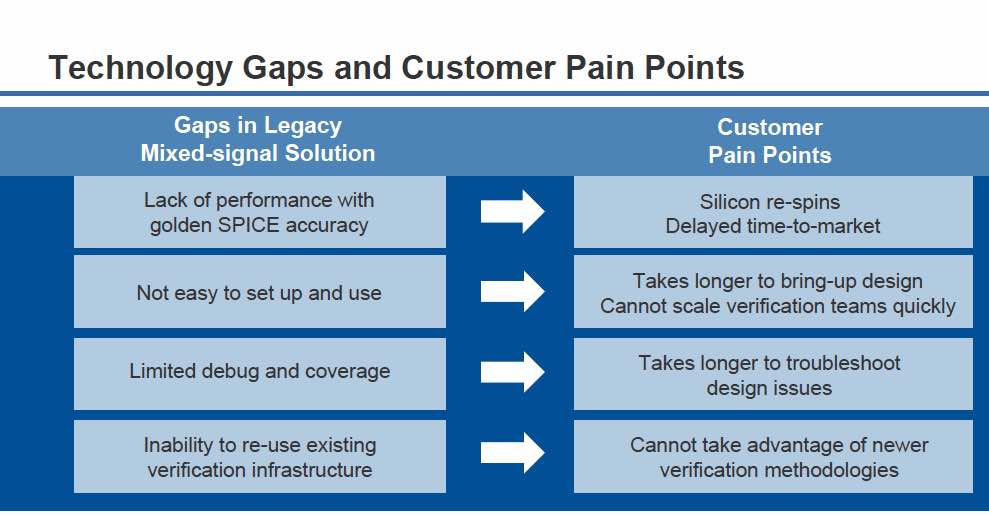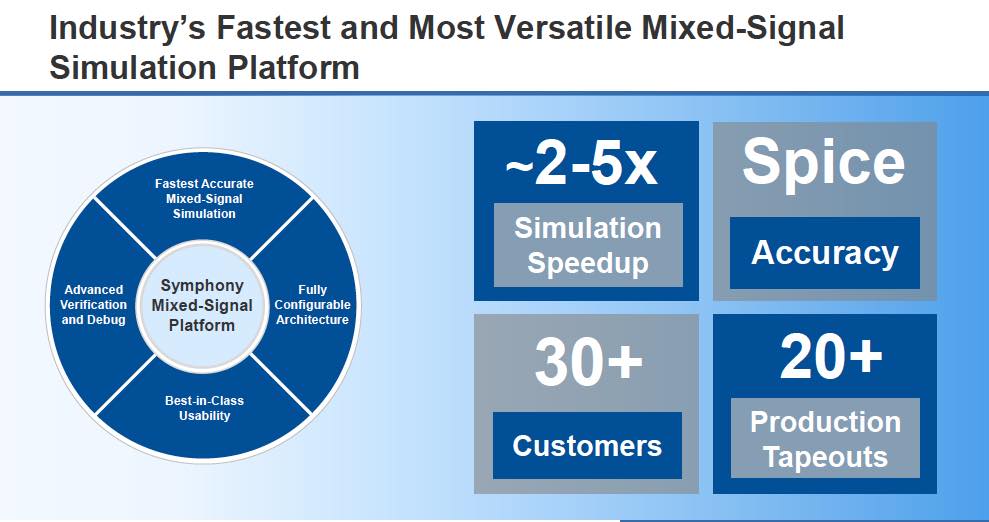Mixed signal simulation is a very hot topic these days. In modern designs, it is harder to draw a line between the analog and digital and work with them independently. Analog blocks are showing up everywhere. Even in what would have qualified as a digital design a few years ago, now designers need to look at things like PLLs, IOs and SerDes from a detailed analog perspective in context to ensure proper design behavior and performance. The drive to reduce power, the addition of sensors, increased use of ADCs, oscillators and other analog blocks in SOCs have all exacerbated the need for faster, easier and more accurate mixed signal modeling. At the same time requirements imposed by automotive standards such as ISO 26262 are creating the need for more comprehensive verification of mixed signal chips.

This last week Mentor has created quite a buzz with the introduction of their Symphony Mixed Signal Platform. Mentor has never been a slouch when it comes to analog and digital simulation. However, their AFS (Analog Fast SPICE) has been a game changer for the industry. What Symphony brings to the table is the ability to easily combine the leading analog simulator with Mentor’s, or other, digital simulators. At the same time Symphony overcomes many of the limitations that engineers faced while trying to verify mixed signal designs.
Typically, transistor level analog simulation was too slow to incorporate with digital simulations. As a result, people turned to behavioral models to speed up the analog side of the simulation. However, creating these models requires specializes skills and extra development time. And, of course any design revision required rework. Symphony lets design teams avoid the need for behavioral modeling to achieve faster run times. AFS provides nanometer SPICE accuracy and a capacity of 20M SPICE elements.
One of the key concepts of Mentor’s Symphony is their use of Boundary Elements (BE) that support all signal types and multiple power domains, including dynamic supplies. Their approach significantly improves debug, where now detailed information about signals at the interfaces can easily be examined in detail. Their approach is flexible enough that mixed digital and analog hierarchies are easily supported, with multiple levels and no restrictions on mixing A or D at each level. One important feature that Mentor is highlighting is their Hi-Z checking capability, which lets designers detect when a mixed signal net goes into a ‘Z’ state.

According to Mentor they have 30 customers who have been using Symphony prior to its release and their announcement contains many customer quotes reporting dramatic improvements in runtime and overall results.
Stepping back, this new product from Mentor is starting to paint a picture of what the Siemens acquisition means for Mentor. Going from a public company to a privately held company can mean big changes. I know that many people in the industry were wondering if Mentor would become the private EDA group for Siemens or if they would be able to continue robust product development. Much of Mentor’s more recent reputation and success has come from the Calibre line. Of course, Mentor has very competitive offerings across their product line. However, Symphony looks like a major long-term investment that aims to upset the analog mixed signal flow status quo. There is more information about Symphony on the mentor website.
Share this post via:





Comments
There are no comments yet.
You must register or log in to view/post comments.